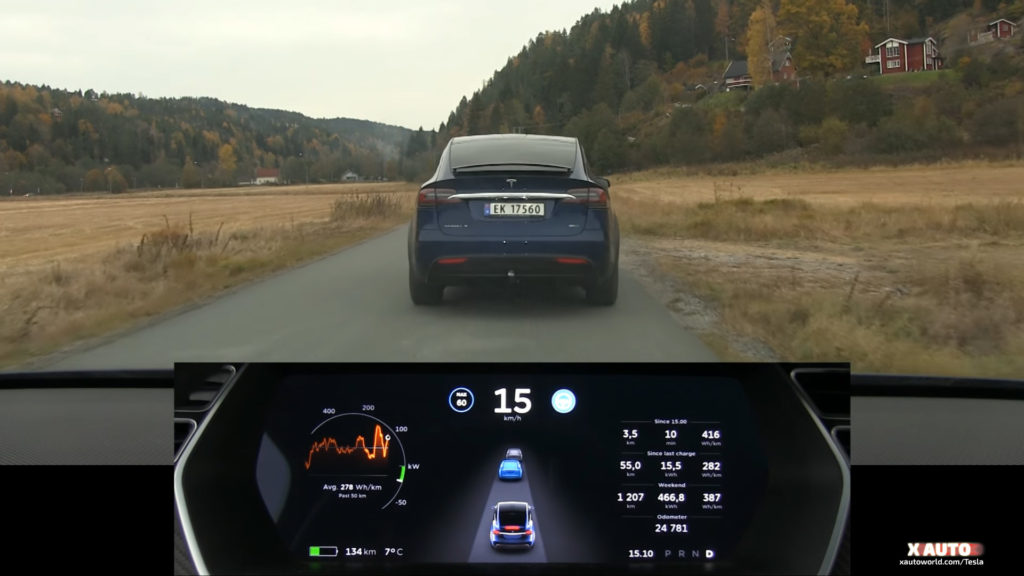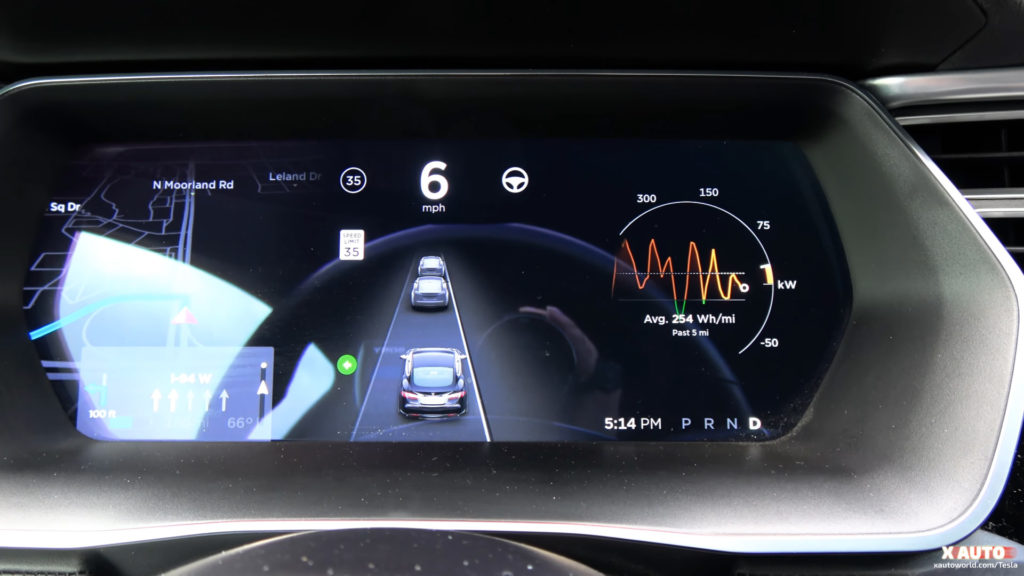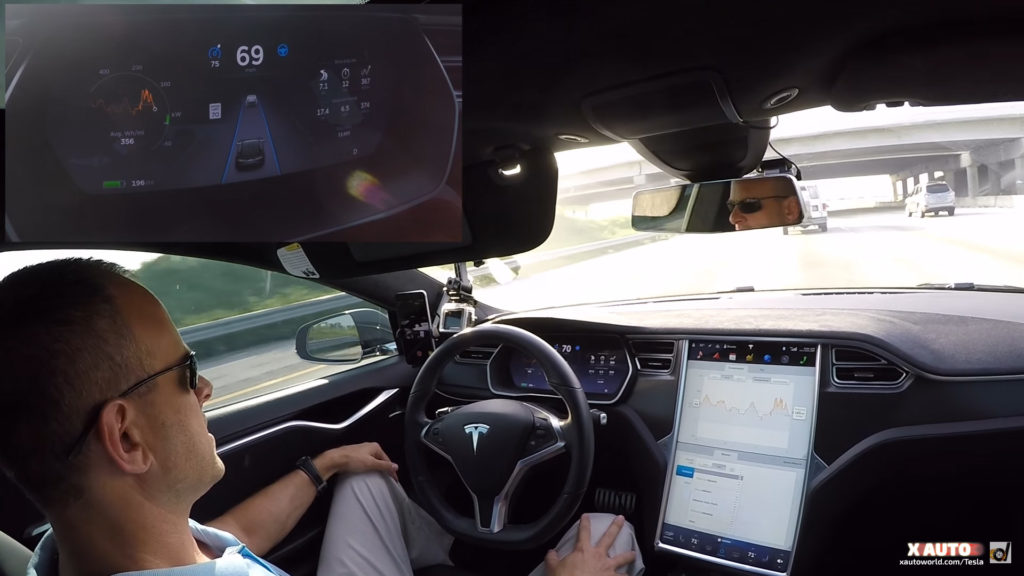How Tesla Autopilot Radar Technology Predicted The Accident And Started Applying Emergency Brakes
A dash-cam video (below) posted by Hans Noordsij from the Netherlands erupted on Twitter that shows Tesla’s Autopilot system alarming the driver just before the accident happens in front.
This forward-collision warning might first seem to be out of nowhere but a second later the mystery is solved.
According to the driver of Tesla, the vehicle did not just alarm him of a possible collision but also started to apply Automatic Emergency Brakes. Off-course the driver then applied further braking and Tesla occupants stopped at a safe distance.
Another good news is that the people involved in the accident are also safe.
So how did Tesla Autopilot managed to predict the accident? The answer lies in the 8.0 Autopilot software update which enables the on-board radar to detect a vehicle beyond the one you have in front. Before 8.0 Tesla vehicles equipped with radar could only detect one vehicle at the front.
As we can compare the front vehicle detection by the radar from the pictures below for Autopilot 8.0 and 7.0 they can detect 2 and 1 vehicle respectively.
Click/Tap images to zoom-in, share or download.
– Advertisement –
What 8.0 update to Autopilot software on Tesla vehicles enables the radar to leap under or from the sides of the vehicle in front to detect the 2nd vehicle in the row.
The famous guy in the Tesla community Mr. Bjørn Nyland performed the test on the new update and improvement in the radar tech in the following video. This is so far the best testing video of this system and closely resembles the highway accident prediction we saw earlier.
This update was performed directly over-the-air for Autopilot 1.0 hardware but is still not deployed to Autopilot 2.0 cars.
This is basically due to the fact that Autopilot 2.0 hardware equipped Tesla vehicles will for some time have less features than Autopilot 1.0 cars as stated by Elon Musk in his Autopilot 2.0 press conference.
As we can see the video and driver comments on Twitter that not only the car alerted for a collision it also started applying auto emergency braking but the driver had to apply full brakes to stop the car. Actually the Autopilot system is still learning and gaining confidence and according to Tesla motors;
As the system confidence level rises, the braking force will gradually increase to full strength when it is approximately 99.99% certain of a collision.
According to Tesla, their vehicle radar system can effectively detect even a landing UFO in zero visibility conditions, this and more you can read from Tesla’s press-release about their radar system, its efficiency, and how it will improve over time.
While there are dozens of small refinements with Version 8 of our software, described in addendum below, the most significant upgrade to Autopilot will be the use of more advanced signal processing to create a picture of the world using the onboard radar. The radar was added to all Tesla vehicles in October 2014 as part of the Autopilot hardware suite, but was only meant to be a supplementary sensor to the primary camera and image processing system.
After careful consideration, we now believe it can be used as a primary control sensor without requiring the camera to confirm visual image recognition. This is a non-trivial and counter-intuitive problem, because of how strange the world looks in radar. Photons of that wavelength travel easily through fog, dust, rain and snow, but anything metallic looks like a mirror. The radar can see people, but they appear partially translucent. Something made of wood or painted plastic, though opaque to a person, is almost as transparent as glass to radar.
On the other hand, any metal surface with a dish shape is not only reflective, but also amplifies the reflected signal to many times its actual size. A discarded soda can on the road, with its concave bottom facing towards you can appear to be a large and dangerous obstacle, but you would definitely not want to slam on the brakes to avoid it.
Therefore, the big problem in using radar to stop the car is avoiding false alarms. Slamming on the brakes is critical if you are about to hit something large and solid, but not if you are merely about to run over a soda can. Having lots of unnecessary braking events would at best be very annoying and at worst cause injury.
The first part of solving that problem is having a more detailed point cloud. Software 8.0 unlocks access to six times as many radar objects with the same hardware with a lot more information per object.
The second part consists of assembling those radar snapshots, which take place every tenth of a second, into a 3D “picture” of the world. It is hard to tell from a single frame whether an object is moving or stationary or to distinguish spurious reflections. By comparing several contiguous frames against vehicle velocity and expected path, the car can tell if something is real and assess the probability of collision.
The third part is a lot more difficult. When the car is approaching an overhead highway road sign positioned on a rise in the road or a bridge where the road dips underneath, this often looks like a collision course. The navigation data and height accuracy of the GPS are not enough to know whether the car will pass under the object or not. By the time the car is close and the road pitch changes, it is too late to brake.
This is where fleet learning comes in handy. Initially, the vehicle fleet will take no action except to note the position of road signs, bridges and other stationary objects, mapping the world according to radar. The car computer will then silently compare when it would have braked to the driver action and upload that to the Tesla database. If several cars drive safely past a given radar object, whether Autopilot is turned on or off, then that object is added to the geocoded whitelist.
When the data shows that false braking events would be rare, the car will begin mild braking using radar, even if the camera doesn’t notice the object ahead. As the system confidence level rises, the braking force will gradually increase to full strength when it is approximately 99.99% certain of a collision. This may not always prevent a collision entirely, but the impact speed will be dramatically reduced to the point where there are unlikely to be serious injuries to the vehicle occupants.
The net effect of this, combined with the fact that radar sees through most visual obscuration, is that the car should almost always hit the brakes correctly even if a UFO were to land on the freeway in zero visibility conditions.
Taking this one step further, a Tesla will also be able to bounce the radar signal under a vehicle in front – using the radar pulse signature and photon time of flight to distinguish the signal – and still brake even when trailing a car that is opaque to both vision and radar. The car in front might hit the UFO in dense fog, but the Tesla will not.
Photo Credits: Drag Times, KmanAuto
Connected Stories:
- Tesla Autopilot saved several lives by avoiding a dangerous situation, recorded on Model 3 dashcam
- Tesla Autonomy Investor Day coverage
- Watch the ‘Enhanced Summon’ beta being tested, Model 3 finds the owner
- What and How of Tesla’s ‘Navigate on Autopilot – Auto Lane Change’ without driver confirmation (2019.8.5)
- Tesla Model 3 owners can now summon their car using the key fob
- Tesla Model 3 latest news and updates






No Comments